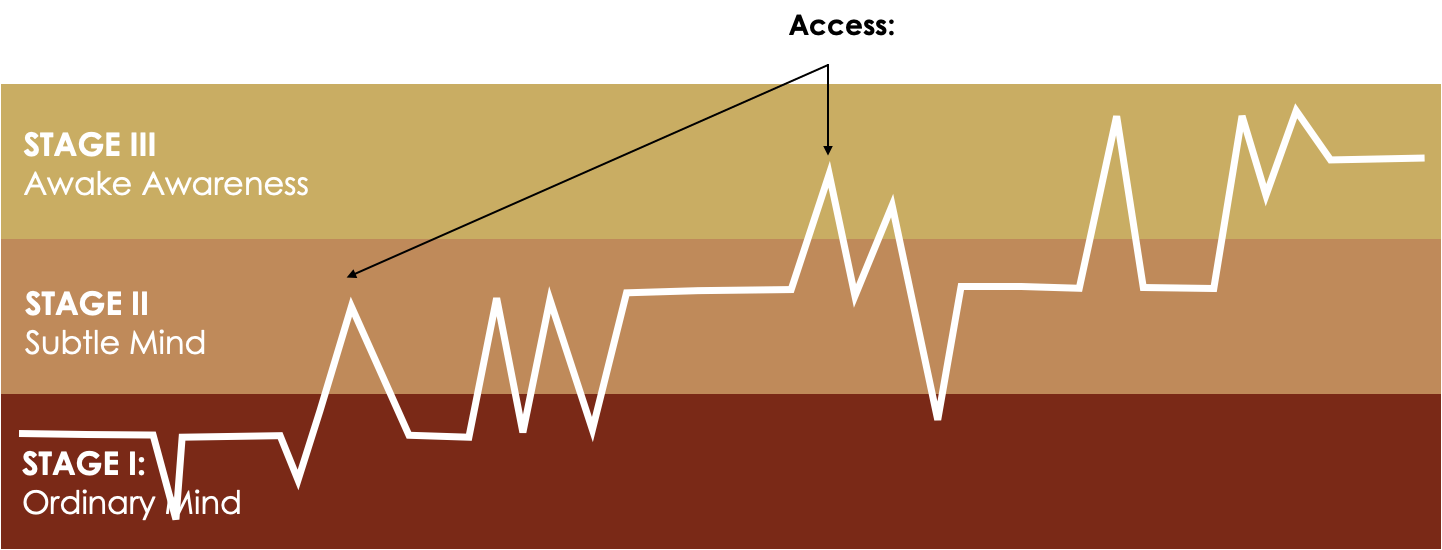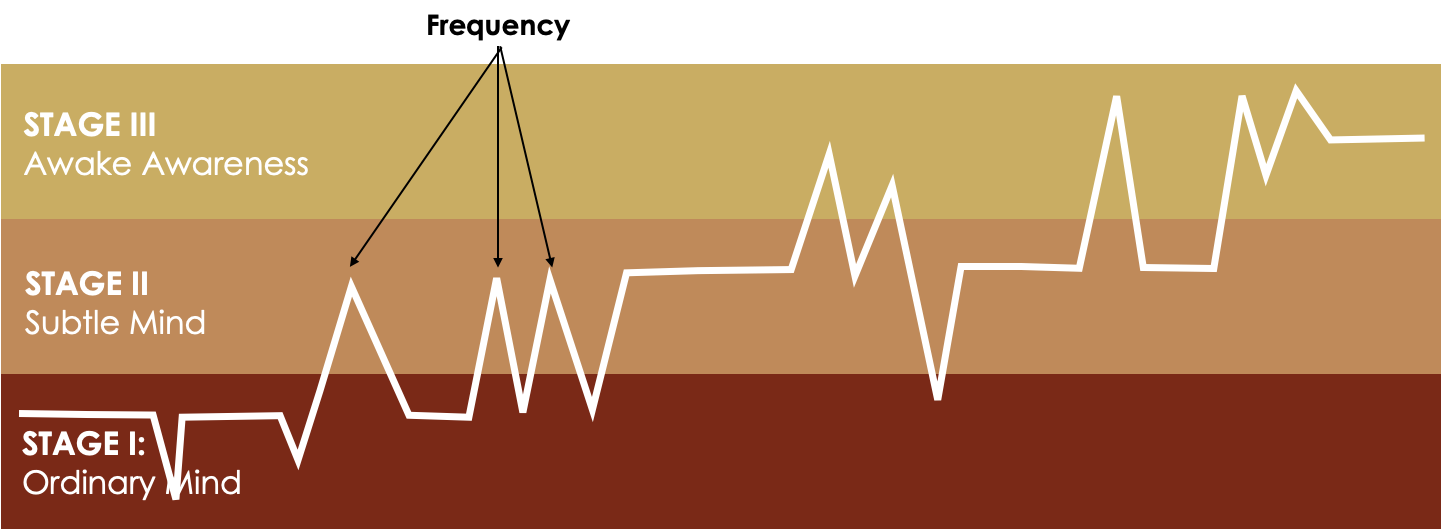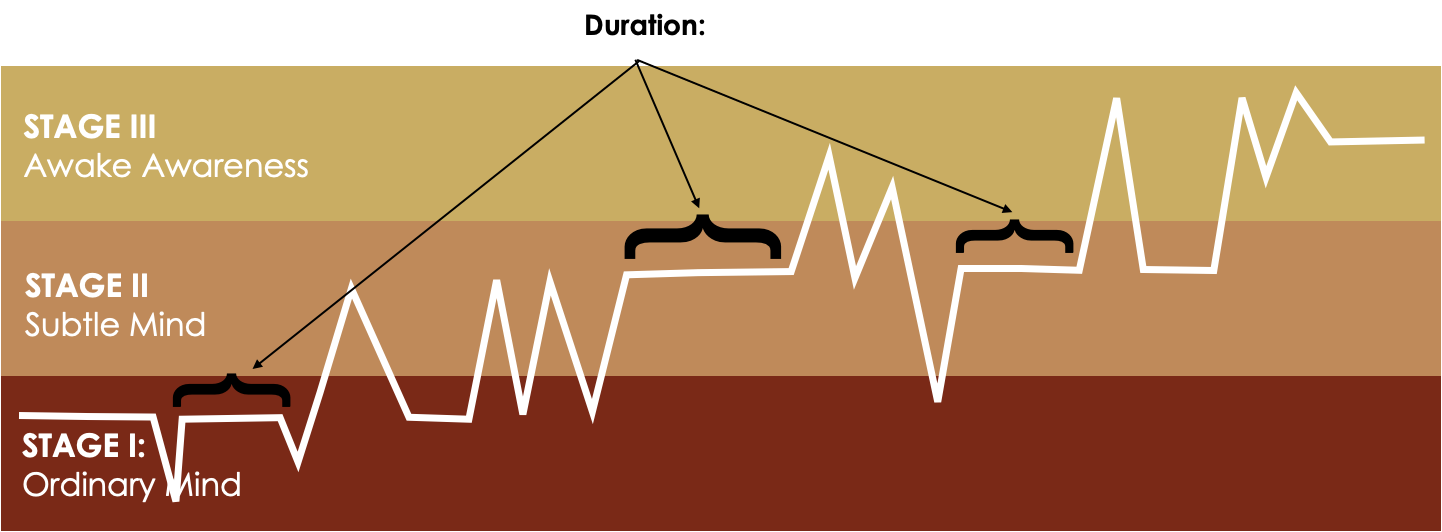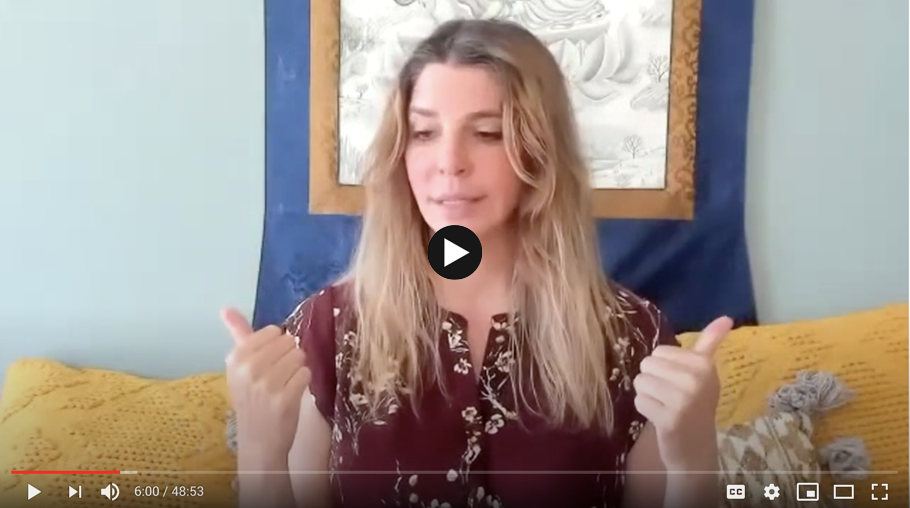VIDEO 2: The Roadmap Overview and States vs Stages
THE ROADMAP OF AWARENESS WORKBOOK
Download the Roadmaps Workbook PDF which contains summaries of each video, the map of the 5 levels of awareness, instructions for the daily practices we recommend, and written transcripts of the video.
VIDEO SUMMARY
In this video Anna-Lisa will cover:
- An overview of the 5 Levels of Mind
- An introductory look at thought-based knowing versus awareness-based knowing.
- An introduction to the difference between state changes vs stage changes
- A look at the 3 aspects that can stabilize these levels of mind: access, frequency, and duration
DAILY PRACTICE: Thought-Based vs Awareness-Based Knowing Exercise
As a daily practice, take a moment several times throughout your day to notice whether you are in thought-based knowing or awareness-based knowing. Explore shifting from one to the other and make note of how this shifts your experience. Notice the quality of your awareness, sensations and experience available from these different levels of mind.
Track this week your access, frequency, and duration as glimpse thought based knowing vs awareness-based and asking yourself the questions below.
OVERVIEW OF THE 5 LEVELS OF MIND
ORDINARY MIND
SUBTLE MIND
AWAKE AWARENESS
SIMULTANEOUS AWARENESS
TRUE NATURE
STATE vs STAGE CHANGE
In the process of learning this Roadmap of Awareness and beginning to practicing accessing each of these levels of mind there is a tipping point. What often starts as a momentary glimpse, a 'state' change, with added repetition, a tipping point occurs and we begin to have a new baseline for our daily experience.
When a level of awareness gains stability, and is able to remain all the time without effort, we call that a stage change. When a rare momentary glimpse becomes a persistent experience that is a stage change.
We progress in our stability by accessing and marinating in these levels of mind levels of mind regularly and remaining in them for longer durations. The pointers given here in this course are meant to be simple guideposts along the awakening path to show you where you are and where to navigate next.
There are three variables that contribute to your ability to stabilize a level of mind and thus have a stage change versus a state change: Access, Frequency and Duration.
ACCESS, FREQUENCY, AND DURATION
ACCESS:
Access refers to our ability to open into these greater levels of mind and be able to view from them. Initially these moments of access tend to occur as a rare spontaneous glimpse. Each time they are accessed, you begin to familiarize yourself with these levels of mind, allowing you to go deeper and deeper into these dimensions.

Something to ask yourself to track your Access:
- How easily can I access this level of mind? When I go to find this level of awareness, is it easy to find?
- Can I shift into this level of mind easily? Or is it difficult to access, meaning it takes a lot of practice and time to be able to open up this level of my mind and sometimes I have difficulty accessing it at all?
FREQUENCY:
Once we begin to access the levels of mind above our baseline we can, through repetition and practice, have more consistent and more frequent access. We begin to glimpse these states more and more at will and our repetition supports us in stabilizing these shifts. A shift from a state change into a stage change involves being able to access these states more and more frequently so that at some point there is a tipping point and the new level remains without effort.

Something you can ask yourself to track Frequency:
- How frequently do I experience this level of mind?
- Is there something that I am able to open to most days?
- Can I glimpse this level many times a day or is this something I experience only rarely?
- Is there a way I could increase the frequency I view from this level, through a meditation practice or learning to glimpse at will throughout the day?
DURATION:
Once we are accessing these levels of mind more deeply and more consistently, to make the shift from a 'state' change to a 'stage' change we then use our practice to stabilize these levels, increasing the duration of how long we remain in these states so that over time we can access them consistently and for longer periods of time.

Something you can ask yourself to track Duration:
- After I have shifted into this level of mind, after meditating or glimpsing, what is the duration?
- How long does this shift remain on its own without any effort?
- After meditating do you shift back into ordinary thought-based mind or are you able to remain in a deeper dimension of your own mind for long periods after meditating?
- You could also notice once you have shifted deeply into a level of mind, if you continue to glimpse throughout the day what is the duration of time you can remain in this level of mind?
We can have stage changes with each level of mind. Some of us may already be stable past ordinary mind. Maybe we live more in subtle mind, where our identity is in awareness. We are still having thoughts and emotions but awareness is where we experience them from.
We may also be stable in Awake Awareness. Meaning the ground of our limitless awareness is who we are even as we experience our thoughts, emotions, energy, and life from this knowing awake awareness.
Most people progress through stages towards their true nature and sometimes we make a stage change that is not part of a progression.








